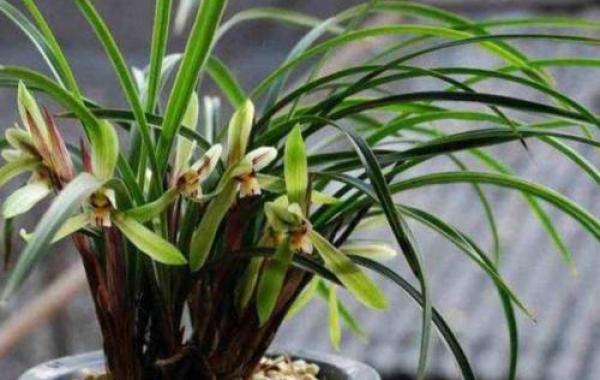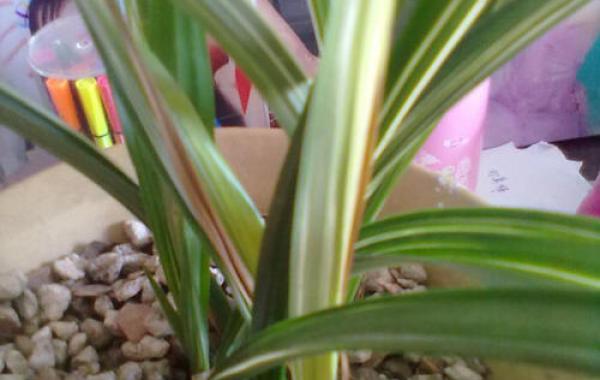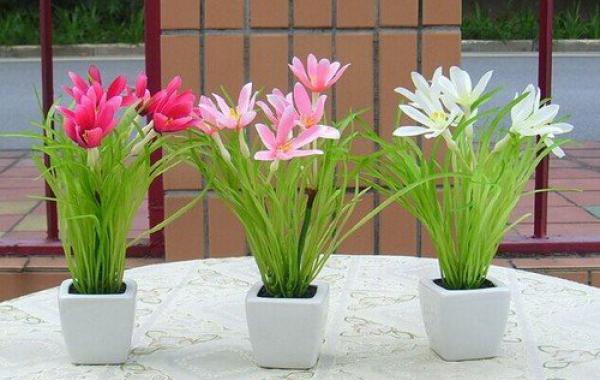How to manage orchids in summer?

How to manage orchids in summer.
In the hot and rainy summer, friends who love orchids should pay attention to:
Shading orchids are semi-negative flowers, which should be properly shaded and avoid strong light in the middle of summer. It is best to use a sunshade net to shade, and put the orchid near the surface of the water or in a place with fresh air and good ventilation.
Fertilization should follow the principle of applying thin fertilizer frequently. It depends on the variety of orchids, the weather, the temperature and the growth of the plants. In general, Chunlan applies nitrogen and potash fertilizer in summer, sword orchid applies phosphorus and potash fertilizer, and cold orchid does not apply any fertilizer. In addition, weak plants should not be fertilized on cloudy days or when the temperature is too high.
Although the watering orchid is fleshy root, but in the summer with strong light and high temperature, the demand for water is relatively increased, so it is necessary to ensure that it has enough water. In addition to normal watering, foliar spraying can be carried out at noon to increase humidity.
Spraying orchids are prone to anthracnose in plum rain and high temperature seasons. in addition to improving ventilation and light transmission conditions, the disease should be prevented and controlled in time. Bordeaux solution or methyl topiramate is sprayed every 10 days to control leaf anthracnose; 40% omethoate and triclofenac are sprayed every semimonthly to kill shell insects and mites.
It is windy and rainy in summer, especially the rainstorm, which will not only break the orchid leaves, but also splash the soil with bacteria on the orchid heart or orchid leaves, leading to the occurrence of brown spot in orchid plants. Therefore, in case of heavy rain, it is necessary to cover the rain properly.
Pruning orchid leaves that have been damaged by pests should be cut off in time so as not to infect other orchid plants. At the same time, orchids blooming in summer should also be cut off residual flowers and withered leaves so as not to consume too much nutrients.
The illumination of orchids in summer
"all things grow by the sun", and light is the nutrient source for the differentiation and growth of orchid flower buds. Dyeing for a long time, photosynthesis produced more nutrients, more nutrients accumulated under reasonable temperature difference, new buds grew well and flower buds differentiated and grew more in the same year. But too strong light will hurt the orchid leaves, orchids are semi-positive plants, afraid of strong light, like weak light. Generally speaking, the stronger light is suitable for the reproductive growth of orchids, with more flower buds, darker flower color and earlier florescence. The weaker light is beneficial to the vegetative growth of orchids, with more leaf buds, greener leaves, lighter flowers and later flowering, so we must master the light of orchids well, not too much yin and yang, but half yin and half yang, that is, yin and yang should be moderate. Specific operation, the summer orchid shed clear day from 11:00 to 5 pm, must be sunshaded (preferably with double-layer net), other time can not shade, fully let orchids in the sun for photosynthesis, conducive to the rapid growth of orchids and enhance disease resistance.
The temperature of orchids in summer
The best temperature for orchids to grow is 20-30 degrees, and orchids grow well in this range of temperatures. The temperature is higher, the orchid grows fast, the florescence is earlier and the flower fragrance is strong. The temperature is low, the orchid grows slowly, the florescence is delayed, and the flower smell is light. We should regulate the temperature of the orchid room from the growth characteristics of the orchid. The temperature in the daytime can be in the range of 24 degrees to 30 degrees, and the temperature at night can be adjusted in the range of 16 degrees to 24 degrees. This temperature is suitable for the rapid growth of orchids and the accumulation of nutrients for sprouting summer and autumn buds, which is conducive to the emergence of more summer, autumn buds and improve the seedling rate of orchids in the same year.
Humidity of orchids in summer
Orchids are not dry and warm plants, but mesophytic succulent roots. The absolute temperature of the orchid growing pot soil is about 50%. The long-term dry root of the basin soil is thin and thin, and the long-term warm root of the basin soil is black and rotten. In order to protect the orchid root, the humidity of the basin soil in summer can not be too dry or too wet for a long time. Orchids like moist fresh air. The best air temperature for orchid growth is about 80%. Therefore, the air humidity should be controlled at 65% 80% in the daytime and 756% in the evening at 959%. Due to the high temperature in the afternoon in summer, the air temperature is too high and the muggy air temperature is not conducive to the growth of orchids. The air temperature is slightly higher at night, which is beneficial to the orchid leaves to absorb moisture and supplement the water consumed during the day, so that the orchids can grow. Therefore, it is more appropriate that the temperature at night is higher than the temperature during the day, and the air humidity in the daytime can not meet the requirements. The orchid shed in summer should pay attention to ventilation and ventilation. Orchids like fresh air. If people enter the orchid shed with a sense of smell, orchids can't grow well.
Watering of orchids in summer
The best water for watering orchids is Rain Water (weakly acidic), river water (neutral), tap water (after one day of storage for chlorine gas) must not use deep well water, summer watering principle "basin noodles dry, watering thoroughly". The temperature of watering should be close to or lower than the temperature in the air. Do not water orchids that are higher than the temperature of the air. The best way is to put a tank or make a pool in or near the orchid shed, which is usually filled with spare water, and the watering time is generally from 7: 00 to 9: 00 in the afternoon. at this time, the temperature is low and the moisture of moisture evaporation is replenished in time, which is conducive to the night rest and absorption of water in the orchid root and the summer growth of the orchid. When the orchid basin is relatively dry, the correct approach is to take Rain Water to water the orchid basin thoroughly so that the temperature and humidity of the small world in the basin is consistent with that of the nature outside. Practice has proved that the orchid will grow well, on the contrary, when it is muggy and watered outside the shed on a sunny day, although the open-mouth orchid sprouts are carefully avoided, as a result, the orchid sprouts are broken and destroyed, which is due to the excessive temperature contrast inside and outside the basin.
Fertilization of orchids in summer
Orchids are plants, and the growth of plants is inseparable from fertilizers. Summer is also the peak season for orchid growth, and more liquid fertilizers such as nitrogen, phosphorus, potassium, trace elements and ammonia picric acid should be applied twice a month, usually twice a month. Many seedlings in the basin, strong seedlings should be applied more, weak seedlings, residual seedlings, new seedlings should be applied less or not, orchid fertilizer should be light, avoid thick fertilizer. Because the sprouting and leaf spreading period is also the time for the germination and extension of the new roots of the orchid plant, if the thick fertilizer is applied, it is easy to burn the new roots, the light ones affect the normal growth of the plants, and the heavy ones will cause the plant death.
Prevention and control of orchid diseases and insect pests in summer
Summer is the high incidence period of insect pests and diseases, so we should give priority to the prevention of diseases and insect pests, comprehensive control, grasp the law of disease, grasp the most effective period of prevention and control, the right medicine is the principle of orchid diseases and insect pests control, commonly used fungicides are sprayed once a month. The use of each drug dilution ratio should be accurate, too light and ineffective, too strong to produce drug damage, spray the front and back of the orchid leaves, as well as the entire orchid site, in order to avoid drug damage, the time should be sprayed in the evening.
Related
- Is the orchid suitable for indoor use? Is it good for the body?
- How to prevent the empty root of orchids?
- What to do after the crab claw orchid is withered?
- Why are the leaves of orchids always yellow? Fertilizing and watering.
- Can the root of the gentleman orchid be saved if it is rotten?
- Diagnosis and treatment of cotton-blowing beetle insects in Cymbidium
- There is a way for a gentleman's orchid to rot.
- What is the most suitable temperature and humidity for the orchid?
- How to raise a gentleman's orchid? Cultivation techniques of Cymbidium
- How to prepare the nutritive soil for the cultivation of Cymbidium



